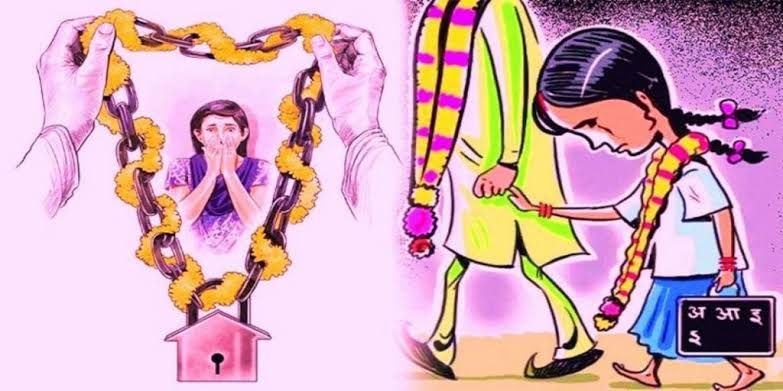Child Custody Law
Abstract
The article will shed light on child custody and guardianship, a prominent topic in family law. Clarifying the distinctions between these terms, it explores what Indian laws state about custody and guardianship. Recognizing that these matters can cause significant psychosocial distress for the child and parents, the article addresses the legal complexities of making rational judgments regarding child ownership. Family law serves as a framework for legal remedies, protection, and safeguarding the child’s interests. The article delves into landmark judicial responses aimed at determining the child’s best interest and welfare. Additionally, it analyzes various personal laws and noteworthy court judgments. Child custody is pivotal, as children often bear the emotional burden of marriage dissolution, family disputes, or alienation, making them particularly susceptible to the impacts of tension and stress.
Introduction
Marriages don’t always proceed smoothly, leading to potential annulments or separations. Unfortunately, the impact of such marital breakdowns extends significantly to the children, who endure the harsh consequences of their parents’ split. These youngsters confront the distressing reality of parental separation, often grappling with emotional or psychological trauma.
While divorce may dissolve the marital bond, parental responsibilities persist. Legal obligations mandate parents to financially support their children, covering aspects such as education, and are enforceable in both civil and criminal contexts. Undoubtedly, child custody emerges as one of the most challenging aspects in the aftermath of a separation or divorce.
Keywords:
Custody, Guardianship, Emotional Strain, Legal Complications, Protection, Personal Laws, and Judicial Response.
The historical evolution of child custody in England and Indian law
The evolution of child custody laws in common law, both in England and India, witnessed a transition from absolute paternal authority to a recognition of the welfare of the child as the paramount consideration. Initially, fathers held sole guardianship, but with changing legal statuses for mothers and legislative interventions, the emphasis shifted to parental rights based on the child’s well-being. In England, judicial decisions invoked the parens patriae jurisdiction, surpassing paternal authority, while legislative acts gradually established equality between fathers and mothers in determining guardianship and custody. In India, the Guardians and Wards Act of 1890 initially upheld paternal supremacy, but it was the Hindu Minority and Guardianship Act of 1956 that prioritized the welfare of the child over other factors.
CHILD CUSTODY CONCEPT
Since the acknowledgment of divorce in personal laws, the Court has grappled with defining an effective approach to address the post-divorce situation of children. As per Black’s Law Dictionary, “custody” is defined as “the care and control,” while the term itself is described as “care, control, and maintenance of a child awarded by the court to either one of the parents in a divorce or separation proceeding.”
Typically, custody entails the court-granted right for either parent to care for and oversee a child under the age of eighteen. In Hewer v. Bryant, the Court recognized the dual nature of custody, encompassing “the power to control education, the choice of the child’s religion, and the administration of the child’s property.”
Despite custody being granted to one parent, the other parent’s rights are not entirely denied. In custody cases, the non-custodial parent is afforded visitation rights, allowing them to meet and interact with the child as determined by the court.
Factors Affecting Child Custody Arrangements
- The Wishes of the Parents:
The court takes into account each parent’s wishes, especially in cases where agreement is lacking. If parents can reach an amicable resolution beforehand, the court typically upholds it unless deemed inappropriate.
- The Wishes of the Children:
While not as weighty as parental wishes, the court considers the child’s preferences. However, the court evaluates these in light of the child’s age and ensures the decision aligns with the child’s best interests.
- Relationship between Children and Each Parent:
The court examines the quality of the parent-child relationship. If one parent has been absent, visitation may be awarded instead of custody based on the child’s stronger bond with the other parent.
- Parents’ and kids’ physical and mental well-being
Physical and mental health factors are considered. Disabilities are assessed, and in cases where a parent may struggle to care for the child, the court weighs this when determining custody.
- Willingness of Parents to Collaborate:
The court assesses each parent’s willingness to collaborate. If custodial arrangements severely limit the child’s time with the non-custodial parent, it becomes a crucial factor in the decision-making process.
- Majority Caregiver Up Until This Point:
The court evaluates which parent has been the primary caregiver, considering various aspects of care, such as teaching, transportation, and overall parenting responsibilities.
- Parent’s Living Accommodations and Ability to Provide:
Living arrangements and the ability to provide for the child are essential. The court examines factors like safety, cleanliness, proximity to family, schools, and the stability of the child’s routine.
- Adjustment Required:
To minimize the impact on the child’s life, the court assesses how much adjustment would be necessary based on custody arrangements, aiming for the least disruption possible.
- Allegations and Instances of Abuse or Neglect:
The court considers both actual incidents and allegations of abuse or neglect when determining custody. False allegations may heavily influence the court’s decision, prioritizing the child’s safety and well-being.
Types of Custody
- Physical Custody
Awarded when one parent is deemed unfit due to abuse, physical custody designates the custodial parent as the primary caretaker, responsible for the child’s emotional, medical, and educational needs. Legal guardianship is granted based on the person’s ability to meet these needs, regardless of their earning capacity. Financial responsibility falls on the earning parent, ensuring a safe environment for the child.
- Joint Physical Custody
Recognizing a child’s complex affections, joint physical custody allows both parents legal custody while designating physical guardianship to one. The focus remains on providing a secure environment rather than income, allowing the child to benefit from both parents’ involvement.
- Legal Custody
Bestowing the right to make crucial decisions regarding the child’s upbringing, legal custody covers educational, moral, financial, and medical matters. These decisions are prioritized for the child’s welfare, irrespective of the parents’ income.
- Third-Party Custody
When neither biological parent is deemed suitable for custody, third-party custody comes into play. Adjudicators may grant custodial rights to a third person based on their assessment of the parents’ fitness for guardianship.
Statutory Law
(i) Guardians and Wards Act, 1890:
This secular law governs guardianship and custody issues for all children in India, regardless of their religion.
(ii) Hindu Law:
The following two acts under “Hindu Law” are applicable to Hindus, Buddhists, Jains, or Sikhs:
(a) HMGA Act 1956:
Classical Hindu law lacked principles on guardianship and custody, but this Act addresses these matters for minor Hindu children.
(b) Hindu Marriage Act, 1955:
Section 26 authorizes courts to issue interim orders for custody, maintenance, and education of minor children, respecting their wishes, with the power to revoke, suspend, or vary such orders.
(iii) Islamic Law:
In Islamic law, the father is the natural guardian, but custody shifts to the mother until the son turns seven and the daughter reaches puberty. The concept emphasizes the mother’s suitability for custody up to a certain age, even after dissolution of marriage, unless she is disqualified due to apostasy or misconduct and her custody is deemed unfavorable to the child’s welfare.
(iv) Parsi and Christian Law:
Under Section 49 of the Parsi Marriage and Divorce Act, 1936, and Section 41 of the Divorce Act, 1869, courts can issue interim orders for custody, maintenance, and education of minor children in proceedings under these Acts.
(v) HMGA Act 1956
This Act allows any person in India or all Indian nationals in foreign countries, irrespective of faith, to register marriages. Section 38 empowers the district court to issue interim orders during proceedings and make just provisions in the decree for custody, maintenance, and education of minor children, respecting their wishes wherever possible.
Case law
In the Gaurav Nagpal v. Sumedha Nagpal case, the Supreme Court outlined key principles for determining child custody, emphasizing the child’s welfare and the importance of a stable environment for optimal growth with both parents. Similarly, in Anil Kumar Jain v. Maya Jain, the Supreme Court underscored that prolonged legal proceedings should not negatively impact the child’s health, development, and well-being.
In Saraswatibai Shripad Ved v. Shripad Vasanji Ved, the court prioritized the child’s desires over the parents’ willingness, a stance reiterated in Gaytri Bajaj v. Jiten Bhalla, where the court emphasized factors such as the child’s wishes, a suitable environment, and personal growth in custody decisions.
For children below five, the mother is generally considered in their best interest for custody. Above five, either parent can be granted custody until the child reaches the age of majority. If the court finds the custodian incapable, custody may be transferred. Upon reaching majority, the child gains the autonomy to make personal decisions, and the court no longer intervenes. Regardless of legal custodianship, both parents share equal responsibility for the child’s expenses.
Family law, like any other, is subject to amendments, and the Law Commission of India recommended potential changes in May 2015, drawing attention to existing laws.
CONCLUSION:
The paramount consideration in family breakdowns or disputes between parents should always be the well-being of the child, who bears the brunt of such situations. Recognizing the sensitivity of children, they should not be subjected to unnecessary strain, depression, or frequent court appearances. Both custodial arrangements and guardianship are subject to challenge in court, emphasizing the need for the legal system to prioritize the child’s best interests. This approach ensures a secure and protected future for the child, irrespective of shifting familial circumstances.
Author(s) Name: Avidi Vineela
(Sri Padmavati Mahila Viswa Vidyalayam, Tirupati.)



